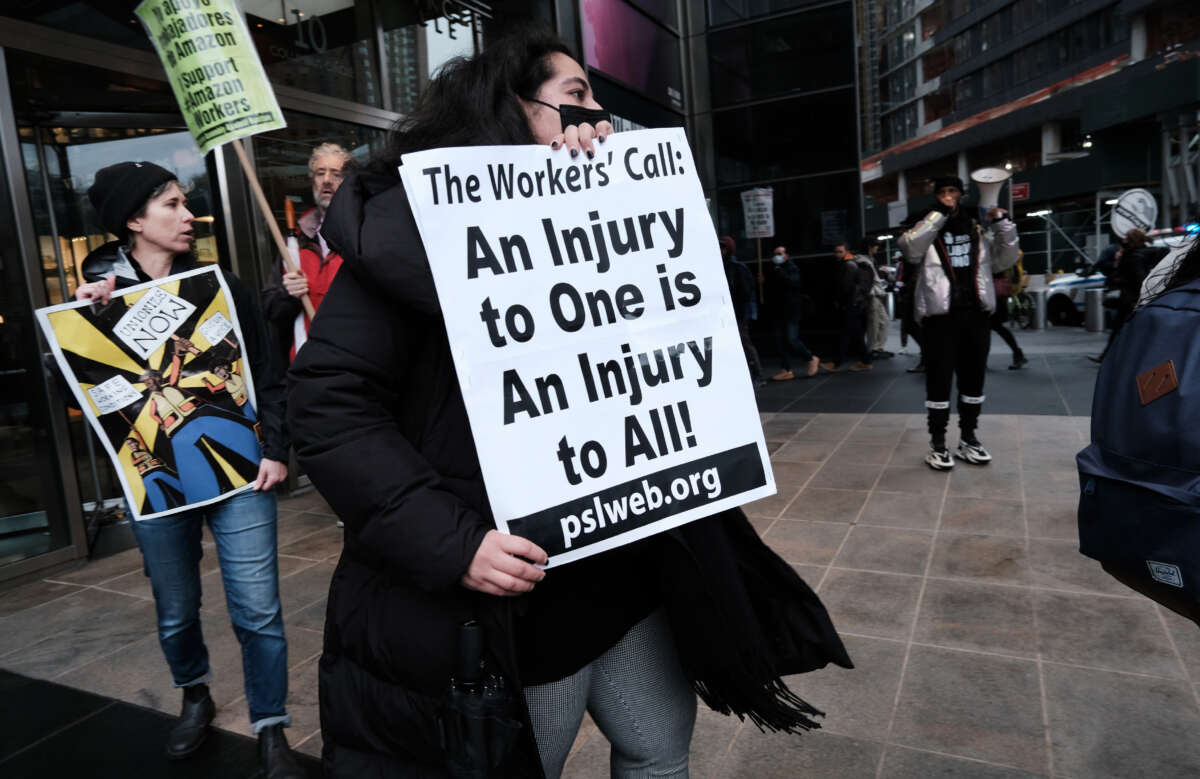Despite the remarkable successes of the resurging labor movement in recent years, newly released data shows that union membership hit an all-time low in 2022 — demonstrating the dire need for pro-worker reforms in labor laws, advocates say.
According to a report by the Bureau of Labor Statistics (BLS) published on Thursday, union membership decreased to a mere 10.1 percent of the workforce last year, the lowest rate on record since the agency began collecting comparable data in 1983. This represents a 0.2 percent decrease from 2021, and is half the rate of unionization recorded in 1983, when 20.1 percent of workers belonged to a union.
Indeed, this is a continuation of a 70-year trend that has seen union membership steadily eroding in the U.S. In the 1940s and ‘50s, union membership reached record highs in the private sector of around 35 percent. However, this proportion started declining in the ‘60s and took a deep plunge in the late ‘70s and early ‘80s, when conservative lawmakers embraced anti-worker ideology and policies of severe austerity. President Ronald Reagan was particularly instrumental in this trend, implementing major attacks on workers’ rights.
This decline comes even as workers at major companies like Starbucks and Amazon fought fiercely to form unions in 2022, leading to a major growth in the number of union petitions filed with the National Labor Relations Board (NLRB) in the 2022 fiscal year.
Those labor wins are reflected in the data, showing that the news isn’t all bad for labor advocates. Despite the overall decline in union membership, the number of workers belonging to unions still increased by 273,000, or 1.9 percent, reversing trends from previous years.
This suggests that the decreasing proportion of workers who are unionized is in large part due to the fact that the job market was booming in 2022, adding over 5 million jobs and adding nonunion jobs at a faster pace than union positions.
The numbers also show other encouraging trends for labor advocates. Union membership grew among Black workers, rising to 11.6 percent in 2022, while states that aren’t typically considered worker-friendly, like Alabama, Ohio and Texas, were among the states with the largest increases in the number of workers belonging to a union.
BLS’s data also reaffirmed the continued benefits of unionization for workers, with median weekly earnings for unionized workers being nearly $200 more than those of nonunion workers.
The fact that the sheer number of workers in a union increased is also a promising sign, some say — especially in a time when conservative and far right lawmakers are actively targeting workers’ rights.
“It’s tempting to look at the 10.1 percent number and conclude that things went the wrong direction for the labor movement last year. But I’d argue that adding nearly 300K members is the more important figure, and decent news for organized labor,” wrote New York Times labor reporter Noam Scheiber.
“The size of the U.S. workforce is going to jump around from year to year, and at the margins the new jobs are probably not going to be union jobs,” Scheiber continued. “But if the labor movement is adding 300K members each year, the percentage of unionized workers is generally going to increase over time.”
Some labor advocates pointed out that the union movement would be growing even more if labor laws weren’t severely skewed to favor employers in the U.S.
Though the rate of union membership reached a low, wrote Economic Policy Institute (EPI) President Heidi Shierholz, there were millions of workers who wanted to join a union but couldn’t. “How do we know that? Survey data show that 48 percent of nonunion workers — more than 60 million workers — would vote for a union in their workplace if they could,” Shierholz said.
In a blog post, Shierholz and other EPI experts said that the data shows the need for labor law reform.
“The fact that tens of millions of workers want to join a union and can’t is a glaring testament to how broken U.S. labor law is,” EPI wrote. “It is urgent that Congress pass the Protecting the Right to Organize (PRO) Act and the Public Service Freedom to Negotiate Act.”
Join us in defending the truth before it’s too late
The future of independent journalism is uncertain, and the consequences of losing it are too grave to ignore. To ensure Truthout remains safe, strong, and free, we need to raise $31,000 in the next 48 hours. Every dollar raised goes directly toward the costs of producing news you can trust.
Please give what you can — because by supporting us with a tax-deductible donation, you’re not just preserving a source of news, you’re helping to safeguard what’s left of our democracy.
